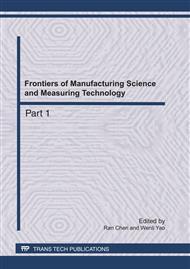p.54
p.59
p.64
p.69
p.75
p.80
p.85
p.89
p.94
Finite Element Simulation of Damage Detection of Stiffened Plate under Temperature Variation
Abstract:
Lamb waves are ultrasonic elastic waves that travel inside and along thin plates and is frequently used as diagnostic tools to detect damage in plate-like structures. In this paper, a transient dynamic finite element simulation of Lamb wave with piezoelectric transducers for damage detection in a stiffened plate under different temperature condition is carried out on the commercial finite element code ANSYS platform. Simulations are conducted over a temperature range. The changes in temperature-dependent material properties are used to measure the differences in the response signal’s waveform. The baseline selection method and baseline signal stretch method are used to compensate the temperature influence on Lamb wave propagation. The results of the numerical simulation demonstrate the effectiveness of the temperature compensation approach and the simulated damage on the stiffened plate can be defected effectively under elevated temperatures environment.
Info:
Periodical:
Pages:
75-79
Citation:
Online since:
May 2011
Authors:
Price:
Сopyright:
© 2011 Trans Tech Publications Ltd. All Rights Reserved
Share:
Citation:


